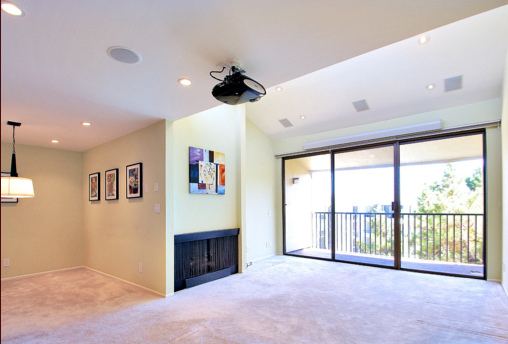Finally! You have decided to cut back on the clutter of keeping a stand-alone black box speaker that clashes with your home décor. However, before you drill holes and install wiring in your ceiling, you must be certain that your preferred area for installation is fit for achieving superb audio quality. Proper planning is key for best results in any kind of home improvement project, and this is certainly no exception. Let’s take a look at some of the key points:
If you are living in a condominium unit, make it appoint that you have informed your neighbor and condo association early on. Take the time to discuss the fire and building codes with your local authorities to ensure that you have the right information on regulations before starting the project. Similar preparation must be applied if you are planning the installation in a single-family home, though the regulations will be far fewer and much less strict.
Now that you’re comfortable with any local building codes, pick your desired area carefully. Once in-ceiling speakers are installed they cannot be moved around, so make sure that they are installed in the area that will produce the best quality sound. This is no time to be wishy-washy! Stake your ground and lets make it sound awesome!
First off I would like to say, if you are looking for some ultra high quality in-ceiling speaker options, check out Vibe Speakers in-ceiling speaker products. They will absolutely blow your mind with their customer service and high quality speakers.
A dedicated theater/media room is obviously the ideal location for in-ceiling surround speakers, but not everyone is going to be lucky enough to have that extra space in their home. Living rooms with an entertainment system are also a popular choice, and far more common. For general music enjoyment, every room is a candidate for high quality in-ceiling speakers. Just make sure you plan for enough speakers to properly cover the area with sound, rather than blasting audio loudly so it can be heard everywhere. Remember this simple rule of thumb: The more speakers you install in a home, the lower you can keep the overall volume. Now, once you have zeroed in on the areas you will install your new ceiling speakers, you’re going to want to check the ceiling or attic for any obstructions and see how you’re actually going to run this wiring. Obviously, you’re going to need enough room to crawl around when you run the wires from the audio system to the speakers. If there isn’t space to crawl, then you will need to employ some of the specialized retrofitting tools such as fish rods. Make sure the wiring will not interfere with your home ventilation, heaters or air condition unit. And remember to ALWAYS survey the area for any studs, pipes or other wires before drilling any holes.
Remember, if your home happens to have a complex wiring situation, it may be best to seek assistance from a professional electrician for proper wiring advice.
Do you think you are ready to install the in-ceiling speakers? Read the 5 Easy Steps To Install In-Ceiling Speakers.
